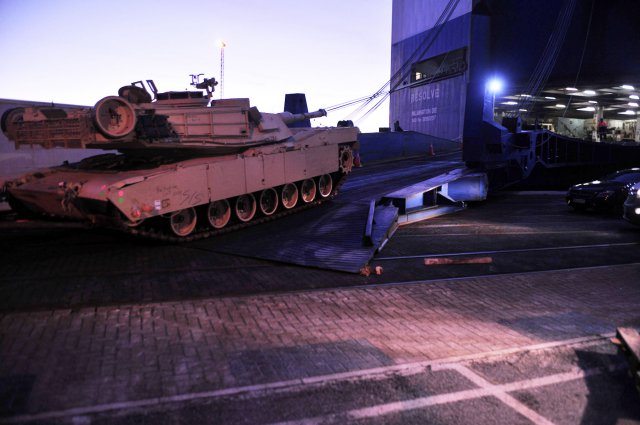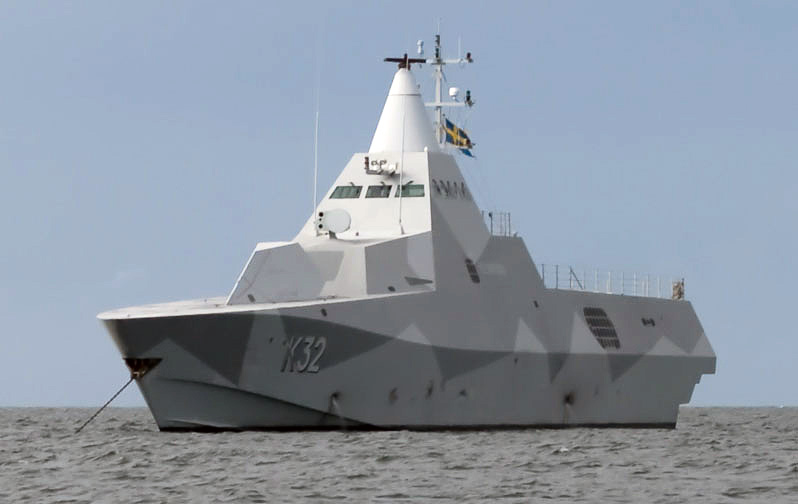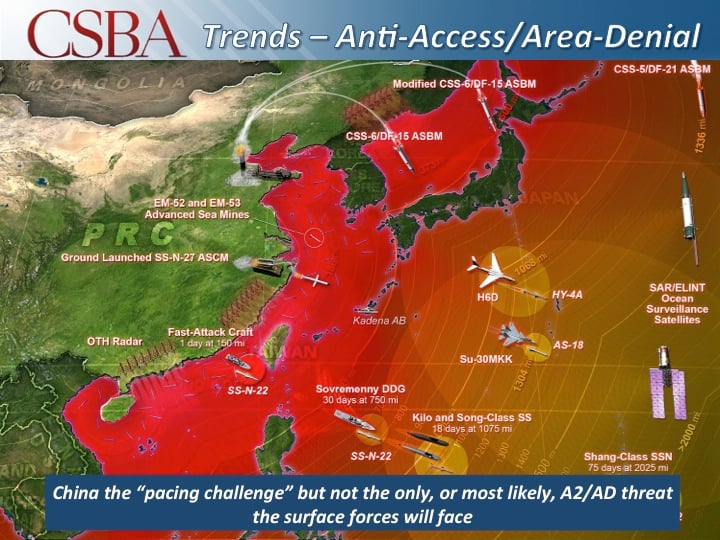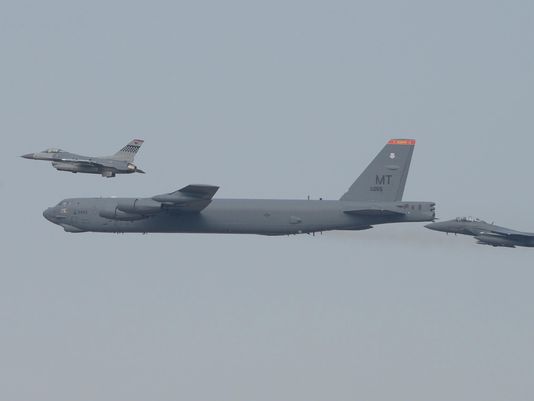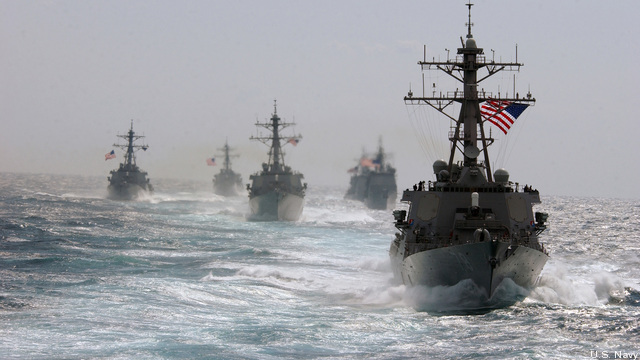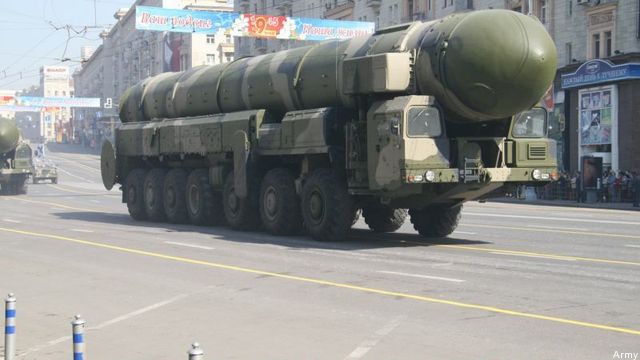Army Soldiers Slash Time To Move From Port To Front: Deterring Russia
Posted on
HUNTSVILLE, ALA.: Determined to deter the rising Russian threat, the US Army is slashing the time it takes for a brigade to get ready for battle once it’s arrived in Europe, from over 40 days to under 10. Normally unloading equipment, getting organized, and moving to the front takes more than 40 days, Maj. Gen.… Keep reading →
Big Wars, Small Ships: CSBA’s Alternative Navy Praised By Sen. McCain
Posted on
UPDATED with McCain praise WASHINGTON: The Navy needs a bigger fleet of smaller ships than envisioned in its official Force Structure Assessment, says a congressionally-chartered study from the Center for Strategic & Budgetary Assessments. CSBA emphatically agrees with the Navy that the focus needs to shift from day-to-day counter-terrorism and presence operations to deterring (and if need be,… Keep reading →
Taiwan, Trump, & The Pacific Defense Grid: Towards Deterrence In Depth
Posted on
The phone call between President-elect Trump and the President of Taiwan sent shock waves through the diplomatic community. But it is time to turn the page and include Taiwan in shaping a 21st century deterrence strategy for Pacific defense. The People’s Republic of China has made it clear that the regime is moving out into… Keep reading →
Reach Out To Russia: Former EUCOM Breedlove
Posted on
WASHINGTON: Retired Gen. Philip Breedlove, just weeks after retiring as NATO’s Supreme Commander, Europe, urged the alliance to reopen “a line of communication” with the Kremlin. While Breedlove’s tenure as SACEUR was wracked by the annexation of Crimea, the invasion of eastern Ukraine, and NATO’s race to strengthen its defenses, his focus was not on… Keep reading →
Doyle’s Wrong: Bombers ARE Best For Nuclear Signaling
Posted on
The modernization of America’s nuclear weapons looms as one of the largest and most crucial set of strategic and spending decisions the American military faces over the next decade. A crucial element in this discussion is how does America best prove it can deliver these weapons — without annihilating certain portions of our globe —… Keep reading →
Many Ships = Few Wars: The Case For A Big Fleet
Posted on
WASHINGTON: Think of international conflicts as earthquakes. Many little ones are better than one “Big One” — a global war. Social science suggests that the more often two rival powers interact, the more likely they are to resolve their differences through many small, manageable conflicts rather than one violent conflagration. That makes naval presence worldwide a very… Keep reading →
US Must Do More To Deter ‘Reckless’ Russia: Farkas
Posted on
WASHINGTON: Until 5pm last Friday, Evelyn Farkas was the Pentagon’s top policy expert on Russia. At 8am this morning, the recently liberated Farkas proposed a Russia policy much more assertive than what her former superiors have publicly endorsed — at least, so far. She wants the US to consider sending (defensive) lethal weapons to Ukraine,… Keep reading →
Limit Military Command Of Spy Satellites: Butterworth
Posted on
When Deputy Defense Secretary Bob Work unveiled what we are now, unfortunately, calling the JICSPOC, there were many many questions and few answers. Among the most important questions was: if spy and military satellites are being flown and monitored from the same place and a satellite appears to be under attack, who will command — the Intelligence… Keep reading →
DNI, NSA Seek Offensive Cyber Clarity; OPM Not An ‘Attack’
Posted on
WASHINGTON: No one really knows what they’re doing in cyberspace: It’s all too new and it changes too fast. So it was refreshing — if unnerving — for two top intelligence officials to admit this morning that the US government’s lack of clarity makes it more difficult both to deter adversaries’ cyber operations and to conduct… Keep reading →
The Lessons of Hiroshima: We Still Need Nuclear Weapons
Posted on
A new era of warfare began when the United States dropped the first atomic bomb on Hiroshima 70 years ago. While ordinary Japanese had grown used to seeing American bombers overhead, the hell on earth that was unleashed on August 6, 1945 eclipsed anything anyone had seen before. Estimates suggest that at least 90,000 of Hiroshima’s 380,000… Keep reading →

